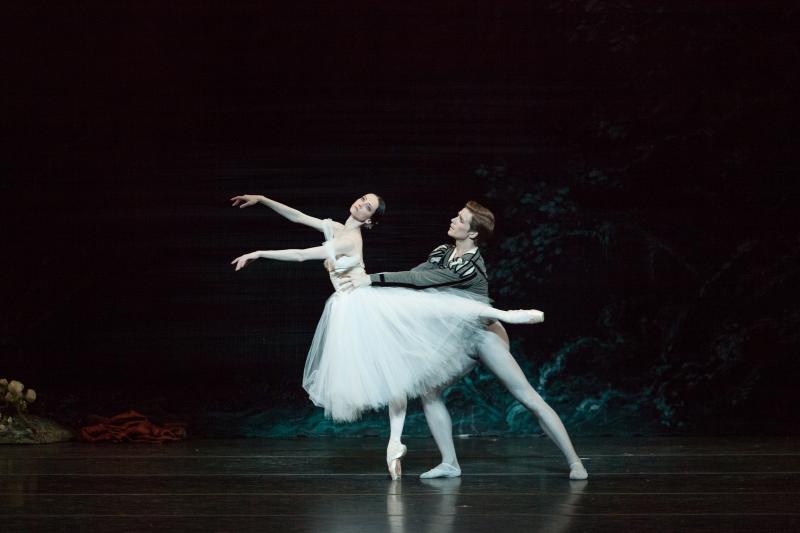Review: GISELLE is a Masterpiece of Romantic-Era Storytelling and Dance

Set in a pastoral German village, GISELLE has all the components of a quintessential romantic work. The titular character (Svetlana Lunkina) is a beautiful young woman living with her strict-yet-loving mother (Lorna Geddes). Although a local forester (Piotr Stanczyk) wants to marry her, Giselle has fallen for another man in the village - the Count of Silesia, Albrecht (Harrison James), who has donned a disguise to escape the responsibilities of his noble status. When the forester exposes the Count's identity, Giselle goes mad and dies - in some productions by suicide, but in this version it seems more likely that a pre-existing heart condition is to blame. She returns as a Wili in the second act to defend Albrecht from the other Wilis and their queen (Heather Ogden), who force men in the woods to dance to their death.
The National Ballet of Canada utilizes Sir Peter Wright's production of the classic ballet, conducted by David Briskin, in a way that highlights the excellence of the story, dance, and abilities of this cast. Lunkina's Giselle is delicate, ethereal, and perfectly executed. Giselle is infamous for being an incredibly physically demanding role, and Lunkina makes it look effortless. In addition to her airy leaps and solid pointe work, she also makes Giselle an incredibly human presence - even in death - through expressive mime.
James's Albrecht is a stately presence, and his decision to play him as a more earnest, caring love interest makes the story all the more heartbreaking as opposed to other takes on the character where he is seen as more of a playboy. Again, mime is a large part of the role in addition to the taxing physical elements, and James offers both with a very real, grounded presence. Both he and Lunkina have great chemistry, making the charming comedic moments early in the first act that much sweeter, and their final dance together even more significant.
The casting of Stanczyk as the forester Hilarion works incredibly well, as there is a genuine, sweet aspect to his portrayal of the character. He's devoted, caring, and although well-meaning, his reveal at the end of the first act does ultimately lead to Giselle's death - something that motivates his visit to her grave, his capture by the Wilis, and the tormented dance scenes that lead to his death. As the cold, calculating Queen of the Wilis Myrtha, Ogden balances the two extremes of the role with real presence. She navigates the light, otherworldly dance requirements while still coming across as uncaring and mean, even when her subjects beg forgiveness.
In sticking with the romantic themes of the era that created GISELLE, the lush set and costume design (both led by Desmond Heeley) transport audiences to the warm, inviting village, with outfits separating the peasants from the nobility starkly. The transition to a cold, unwelcoming forest area was equally fitting for the dark second act, and the use of levels and layers with sheer screens and platforms behind the main stage made for several dynamic moments.
GISELLE is beloved for its romantic story, technically demanding roles, and gorgeous music, conducted here by Briskin to sound like something out of a fairy-tale. While the idea of a waif-like, love-struck woman might not fit in with modern ideas of what a heroine can be, it's clear that GISELLE is a perfect representation of its time and circumstance; something that's refreshing to see in a world where constant reimagining and reinterpretation of older works dominates.
The National Ballet of Canada's GISELLE runs through November 10 at the Four Seasons Centre for the Performing Arts, 145 Queen St W, Toronto, ON.
For more information or to purchase tickets, visit https://national.ballet.ca/Productions/2019-20-Season/Giselle
Photo credit: Aleksandar Antonijevic
Reader Reviews
Videos

